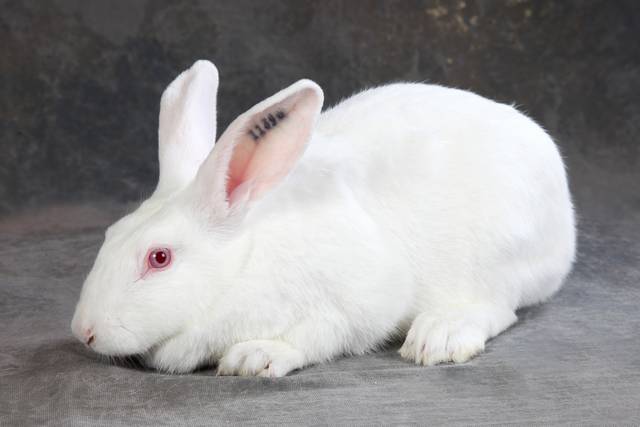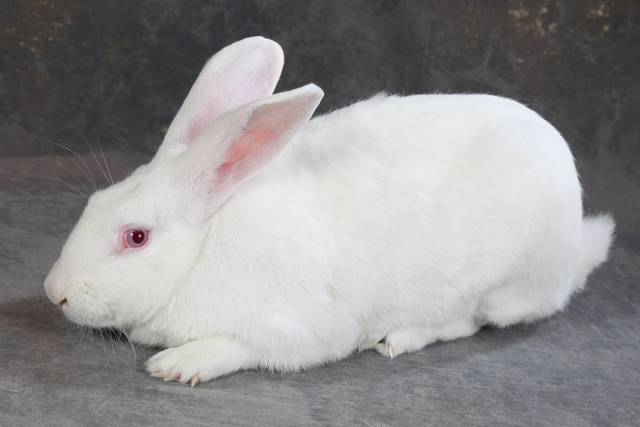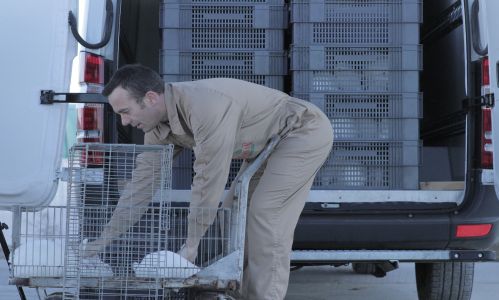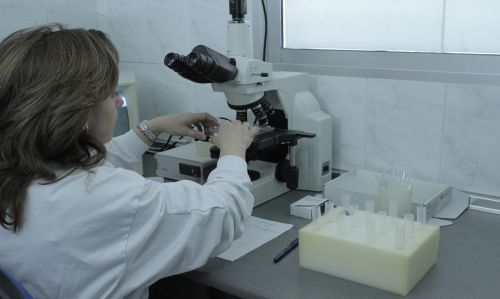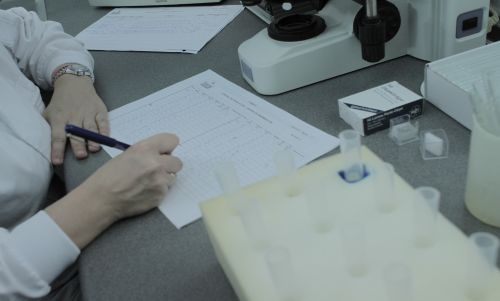Breeding does and bucks for a profitable farm
The aim of our genetic improvement programme is to increase the profitability and production system through the use of genetically improved animals in terms of the most economically significant features.
Intensive rabbit meat farming is based on three-way cross-breeding, where we firstly obtain cross-bred does as a result of cross-breeding mother lines, and secondly the fattening kits, the offspring of cross-bred does and bucks from the paternal line. Consequently, the most important factor in rabbit genetic improvement programmes for meat, is the selection and availability of these specialist maternal and paternal genetic lines, which are the basis of three-way cross-breeding.

Granja Jordán selects four genetic lines, two doe lines and two meat lines. We recommend our clients to cross-breed three ways, so that their farm is as profitable as possible. This cross-breeding consists of mating mother lines selected for litter size at weaning, i.e. we cross GPL grandfather from the maternal longevity line with the GPV grandmother from the green maternal line. Once this cross-breeding has taken place, we produce parent or cross-bred does, which because of hybrid vigour (heterosis), will have superior reproduction parameters to their ancestors.
The parent or cross-bred does are crossed with meat line bucks from the R or C lines. The selection criteria in these lines is the average daily liveweight gain, during the fattening period. Once this final cross has been performed, farmers obtain large litters with a growth rate that permits marketing kits earlier and a better food conversion rate.
The GPV grandparent does are from the V selection line. The selection criteria is the litter size at weaning. These does are for crossing with the GPL grandparent buck to produce replacement does (cross-bred parent does).
The GPL grandparent bucks are from the L selection line. The selection criteria is the litter size at weaning. These are crossed with the GPV grandparent does to produce replacement does (cross-bred parent does).
What is heterosis?
Heterosis is the name given to hybrid vigour, as enhanced production of an F1 doe or parent doe produced by crossing two independent genetic lines.
Most rabbit genetic improvement programmes aim to develop lines so that three-way cross-breeding can take place.
Cross-breeding means we are able to take advantage of heterosis and the complementary genetics between the lines in order to increase production of breeding stock and the growth performance of kits.
The success of selection depends on the heritability and variability of features, among others.
Bio-safety transport service
Granja Jordán takes charge of distributing all its products, either using its own or subcontracted resources:
Breeding rabbits: distribution of animals in Spain and other European countries is carried out using our own transport, in a closed van with climate control and certified by the official veterinary services for transporting live animals. When larger quantities or longer distances are required, we work with a specialist transport company with wide experience transporting live animals. With this type of transport we guarantee that the animals travel in optimum conditions, ensuring good adaptation at the destination farm.
Semen doses: Semen doses are delivered by specialist urgent transport companies.We ensure the products are shipped in the late evening from our farm, perfectly packed to avoid any negative effects of cold or heat, delivering them to our clients early the next morning.
Bio-safety during transport: Granja Jordan has its own disinfection centre, authorised by the official veterinary service, to disinfect vehicles every time they perform a service for us.
Application of semen doses
We have a team of inseminators with over 18 years experience. This is a service we offer our clients and also rabbit farmer training so that they can do it themselves.
Technical advice in professional rabbit farming
Granja Jordán advises new rabbit farmers about the type of installations and facilities they should have, the quantity and type of animals, feed varieties to use according to physiology, and even the number of bands to work with... We will try to resolve any queries that may arise during this new activity.
We work with specialist companies in the industry, who endorse our recommendations.
We try to provide solutions for any reproduction or disease problems our clients may have on their farms.
Let's talk
Why our breeding does and bucks?

